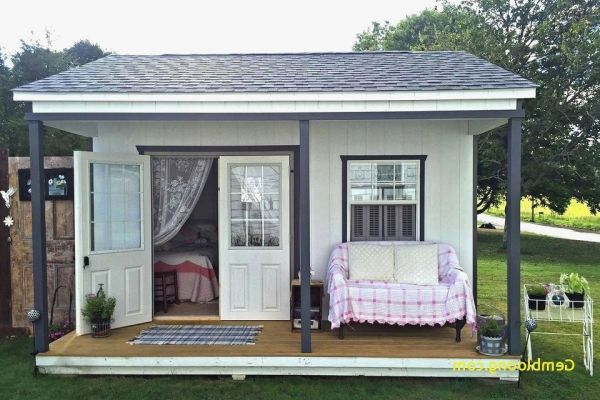14x24 Playhouse Outbuilding Building Diagrams - Activities To Think of When Constructing A Outdoor Shed
Nail along the lines of rafters and raking top plates. Alternatively create frame directly on top of roof. At this point it is critical that the frame is square. Fill in the ends with spare trim. Using the drawings on this site and a little estimating, you should be able to construct line drawings of each wall and of roof structure. Depending on equipment you have available you may find building a bay on the ground and then lifting the entire bay with trusses and purlins installed into place at one time. This means studs are spaced apart 600 from center of one stud, to center of the next stud.
Read here more about how to install asphalt shingles. Also if you don't mind wood floors you could (find more) do that as well and save some money. Used in combination, these new connectors create it astonishingly easy to construct strong roofs without relying on pre-manufactured trusses. The plate could then be segment out after construction is complete. The millimeter measurements are written opposite to the standard measurements. Rent a sod cutter to remove the turf from your building site and then dig out footprint plus a foot of wiggle room on each side. In addition, you need to lock together the adjacent wall frames and the corresponding top plates.
At the ends another vertical layer was added for extra protection, to cover the open ends and to it look better. Use a long level and a pencil to extend line up the wall. Have someone balance it while others position a side wall. You could attach your shed directly to gravel with pegs or auger anchors. When building the floor frame, which includes the mudsill, floor trusses and perimeter band joists, use 2 x 6 or 2 x 8 pressure-treated lumber. You also need to have enough space for foundation and to be able to construct or place your shed.
Anchor posts and anchor caps aren't mandatory, but they would craft your patio roof stronger and longer lasting. Nail through the sill and header into studs for stronger joints. Fix barge board to the fly girders directly underneath barge cap. You will need eight altogether for each corner of walls. The underlayment, cement, roofing nails, along with built-in shingle adhesive, should give a long lasting, windproof and waterproof, roofing system. In addition, check if corners are square, after each step. Clean the bottom of the cut with a chisel. The strength and stability of this outbuilding really does come from the way the corner posts form an integral part of shed, the picture below shows how the posts form part of wall.
Don't forget to seal all end grain cuts with timber preservative. Then create and stand the front and back walls. Cut a birds mouth on twenty rafters for lower rafters. These can be retrofitted, if needed, for a chimney opening larger than the typical 24-inch on-center spacing by cutting through an intermediate rafter and creating a box of doubled rafters and headers to maintain roof support. That extra coating is just another layer that could protect your supplies during a harsh winter. It gives mundane metal shed a little more of a rustic look. And then you wake up to this nonsense.
If the ground is sloped, one end of your outbuilding would be sitting higher on blocks than the other. Secure siding in place by nailing finishing nails through siding and into wall frame. The top of the side panel does rest inside lid which should provide some protection. Divide whole by 27, the number of cubic feet in a cubic yard to get the amount of gravel needed. Install cripple studs, header and door studs. A few minutes with car jack and we were able to push it back and re-level shed. Locate the corners of door openings and roof truss angles by boring small holes through the siding at proper locations from inside.
